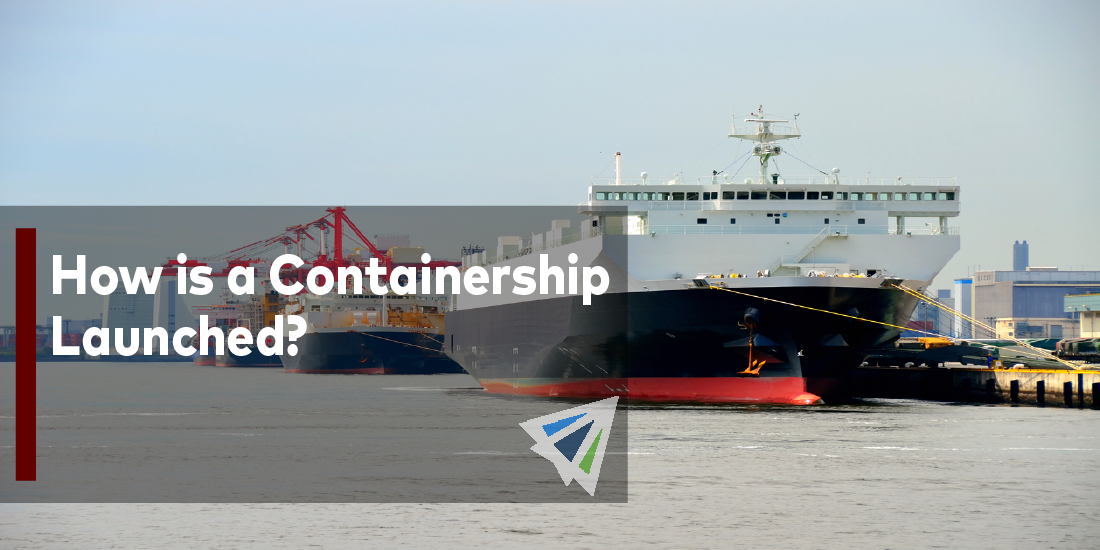Ever wondered how a containership is launched into sea? Well, here’s a blog that details the different types of ship launching methods, how a containership is launched, and what happens if it isn’t launched correctly.
Different Types of Ship Launching Methods
One essential part of the ship launching procedure is the ship launching slipway, which is a structure that consists of sloping way down to the water from the shipyard, per Nautical Channel. This procedure has been largely used for launching newly made or repaired ships.
In most cases, there’s four main types of methods to launch a ship.
Gravitational type launching – this type of launching is actually divided into three main types, longitudinal oiled slideway launching, longitudinal steel-roller slideway launching, and side oiled slideway launching.
- Longitudinal oiled slideway launching is when the ship slides on a slideway and under its own weight enters the water. Typically, oil or wax is used to assist in this process. One benefit of using this method is the simplicity of the equipment and that it’s able to be used for vessels with a variety of different tonnage and types.
- Longitudinal steel-roller slideway launching is when steel rollers are used instead of oil, which reduces friction during sliding. As Nautical Channel notes, this method is the most effective and easiest to start, but the initial installation charges are high.
- Side oiled slideway launching requires the ship to have great stability and power, plus several calculations and constant checks are crucial to guarantee success.
Floating-out type launching –this type of launching is simple, effective, and overall, a safe procedure. This method is when ships are built in dry-docks and then launched by filling the dock with water. While the investment for this type of launching is high, it is quite popular among shipbuilders.
Mechanical type launching – this type of launching centers in a mechanical feature that is a required part in order to launch the ship. These methods are typically used for smaller size vessels, and are not used for large, high tonnage ships.
Airbag launching – is one of the more safe and innovative techniques when launching a ship. They are made of reinforced rubber layers. Additionally, the airbags typically are cylindrical in shape with hemispherical heads at both ends, per Nautical Channel. This method of launching can be used in all types and sizes of vessels.
What Happens If There’s Miscalculations?
Calculations and adjusting are crucial parts of the ship launching process. And for longitudinal and side-slideway launching, procedures on the internal structure of the ship as propping up part of the bow area happen as well.
But of course, mistakes can occur.
One example dates back to September 22nd, 1907, involving the SS Principessa Jolanda. Per Nautical Channel, after the launch the ship started to sink, tilting the port which did not allow it to balance by righting itself. Due to a miscalculation of the center of gravity, the ship was not able to be saved.
A more recent example, dating back to September 29th, 2011, involved the luxury ship SS Jiugang. The vessel was launching by longitudinal slideway launching, and once they slid the ship into water, the ship did not float at all. Resulting in $2.5 million ending up at the bottom of the pond.
Looking Ahead
Should you have any questions regarding this and how it could impact your shipments, please reach out to our team today
Additionally, we have our weekly market updates that can provide you with relevant freight news, updates, developments across the industry, and more.
